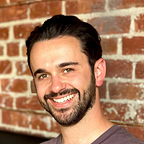Gather explores a new standard in engaged journalism: community production
In a recent post for Journalism + Design, Cole Goins noticed a trend: nearly half of the first round of New Jersey Civic Information Consortium grantees were working to “[equip] more people across New Jersey with journalism skills to support more informed communities.”
In New Jersey, at least six new community media projects across the state are training or preparing to train residents in basic news reporting and multimedia storytelling, including:
- Bloomfield Info Project in Bloomfield
- Paterson Alliance in Paterson
- Newark News and Story Collaborative in Newark
- Stories of Atlantic City in Atlantic City
- Trenton Journal in Trenton
- Stories Invincible in Camden
I run the Bloomfield Info Project, an initiative of the Community Info Coop, where we’re building a new public service local news model for the 21st century. And that includes working to build capacity within our community for the news reporting it needs to thrive.
So this June, I hosted a series of conversations on how to make to journalism with your community as Gather Guest Curator.
Gather’s members can find a round-up of our discussions on Slack here, including highlights like:
- Bloomfield Info Project’s Community Reporter training syllabus
- Journalism + Design’s Community journalism for civic power curriculum
- KPCC’s cheat sheet for community members on how to talk to journalists
- City Bureau’s Documenters field guide
And we ended the month with a Gather Lightning chat on the topic with leading community media practitioners:
- Sonam Vashi of Canopy Atlanta
- Lawrence Daniel Caswell of Documenters Cleveland
- Jennifer Larino of Lede New Orleans
Here’s some of what we learned from them.
How to select stories with your community
Caswell said Cleveland Documenters’s approach isn’t to fix journalism. “I think we feel like the issues with journalism aren’t actually journalism and just fixing them is not going to fix it. The problems are with local democracy. So it can’t just be fixed with reporting…We feel it’s important to build community with folks to create a community of practice.”
Out of that community emerge their reporting assignments. When the residents they’ve trained to document public meetings have questions, the Cleveland Documenters staff looks for an answer. “Their lack of knowledge is not a detriment,” Caswell said.
“When we’ve had enough questions around a topic…we bring folks together and we talk about it more and raise more questions,” Caswell said. “That is the beginning piece of how we decide what we’re going to report on — not just the [initial] questions being raised and not just our ideas — but what was raised when we spoke with our community members.”
Vashi said Canopy Atlanta’s goal is to make journalism function on cycles of community feedback through their publishing schedule. Every new issue begins with community listening. “That’s like being in the park on a nice day, hanging out in parking lots, making connections with people we already know or people who know people we know. Depending on the size of the neighborhood, we’ve spoken to 50 to 150 people.”
“The community listening is both about seeing those broad patterns and working with community members to help narrow them but then also feeling the agency when appropriate to respond to a specific question or item,” Vashi said.
How to get started making journalism with your community
Larino said she wished she had built structured community listening into her time as a reporter in a metro newsroom before starting Lede New Orleans. “I wish I would have done more over my career was look at who I was least likely to talk to on my beats and try to figure out how to talk to those people and talk about media.”
Larino recommended reporters ask those they talk to least how they are experiencing and using news? “Just trying to embrace that curiosity outside of a beat is a way that you can individually get started without trying to have to move the cogs of the whole organization,” Larino said.”
Vashi, a former freelance reporter, recommends taking the extra time to seek more perspectives to inform your reporting. But it’s sometimes about letting those people fact-check your reporting, too. “There are definitely times with sources that have not been well represented in media where I’ve had frank conversations, like ’Hey, here’s kind of what I’m thinking about the angle of this piece. Is this kind of true to your experience or not?’
But Caswell cautioned journalists to recognize the systemic gaps preventing them from adopting community listening and co-creation into their work. “I really feel like it depends on the newsroom that you’re at. It doesn’t depend on you. And it depends on who your editor is and who their bosses are and this whole other range of things, which, to be honest, is the problem in journalism.”
Simon Galperin is the founding director of the Community Info Coop, a New Jersey-based nonprofit leading journalism innovation in the public interest. He served as Gather’s Guest Curator for the month of June.
